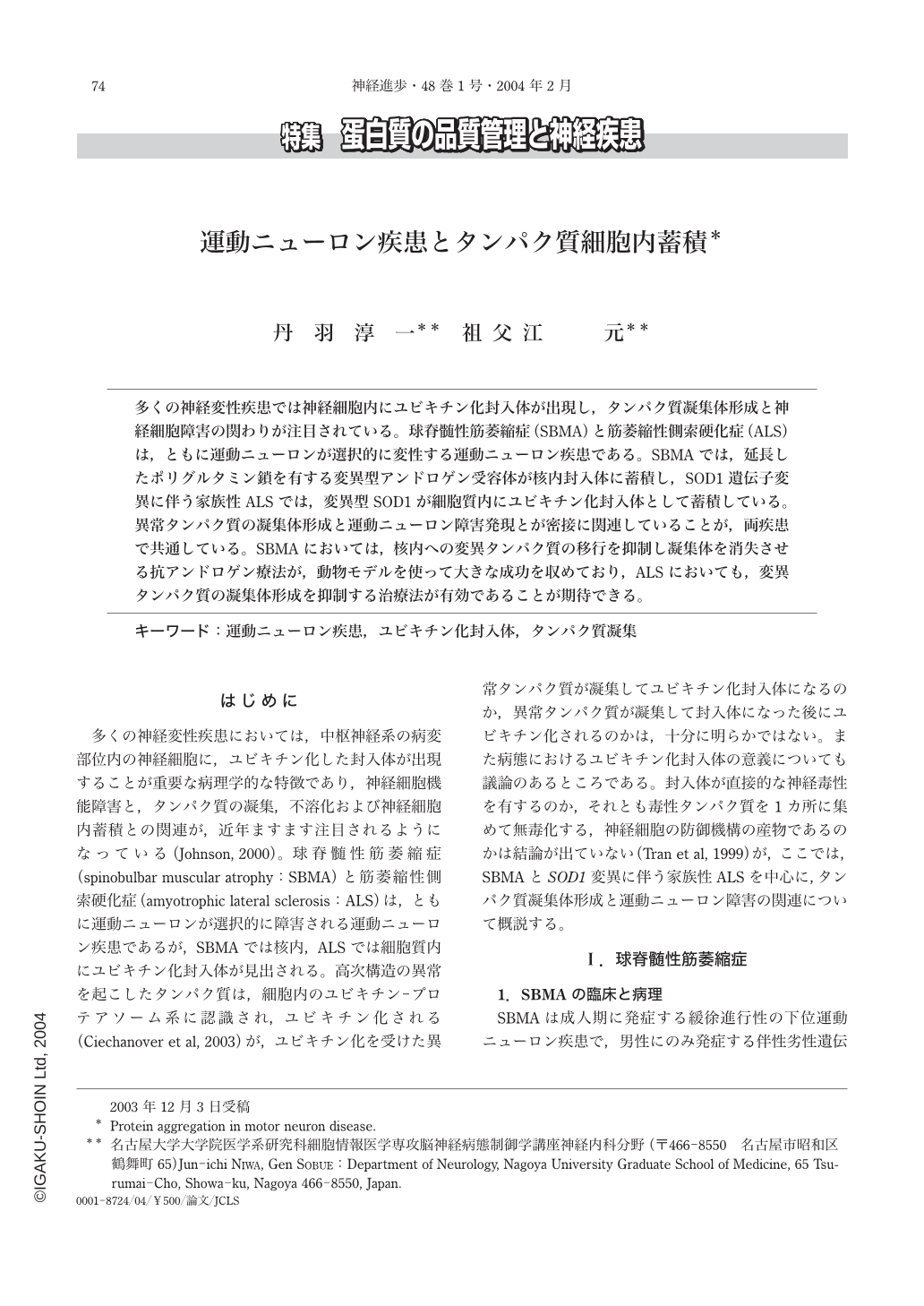Japanese
English
- 有料閲覧
- Abstract 文献概要
- 1ページ目 Look Inside
多くの神経変性疾患では神経細胞内にユビキチン化封入体が出現し,タンパク質凝集体形成と神経細胞障害の関わりが注目されている。球脊髄性筋萎縮症(SBMA)と筋萎縮性側索硬化症(ALS)は,ともに運動ニューロンが選択的に変性する運動ニューロン疾患である。SBMAでは,延長したポリグルタミン鎖を有する変異型アンドロゲン受容体が核内封入体に蓄積し,SOD1遺伝子変異に伴う家族性ALSでは,変異型SOD1が細胞質内にユビキチン化封入体として蓄積している。異常タンパク質の凝集体形成と運動ニューロン障害発現とが密接に関連していることが,両疾患で共通している。SBMAにおいては,核内への変異タンパク質の移行を抑制し凝集体を消失させる抗アンドロゲン療法が,動物モデルを使って大きな成功を収めており,ALSにおいても,変異タンパク質の凝集体形成を抑制する治療法が有効であることが期待できる。
Neuronal toxicity associated with abnormal protein aggregation is one of major hypotheses for many neurodegenerative disorders. Evidence from cell culture models and transgenic mice show protein accumulation in motor system to be closely associated with motor dysfunction of X-linked spinobulbar muscular atrophy(SBMA)and familial amyotrophic lateral sclerosis(ALS)associated with superoxide dismutase 1(SOD1)mutation. In SBMA, androgen-dependent translocation and aggregation of mutant androgen receptor with expanded polyglutamine repeats into the nucleus is a critical step for pathogenesis and anti-androgen therapy offer hope for effective treatment. In ALS with SOD1mutation, there are several lines of evidence that cytoplasmic aggregation of mutant SOD1 leads to motor neuronal cell dysfunction, but pathogenetic mechanisms remains to be elucidated.

Copyright © 2004, Igaku-Shoin Ltd. All rights reserved.


